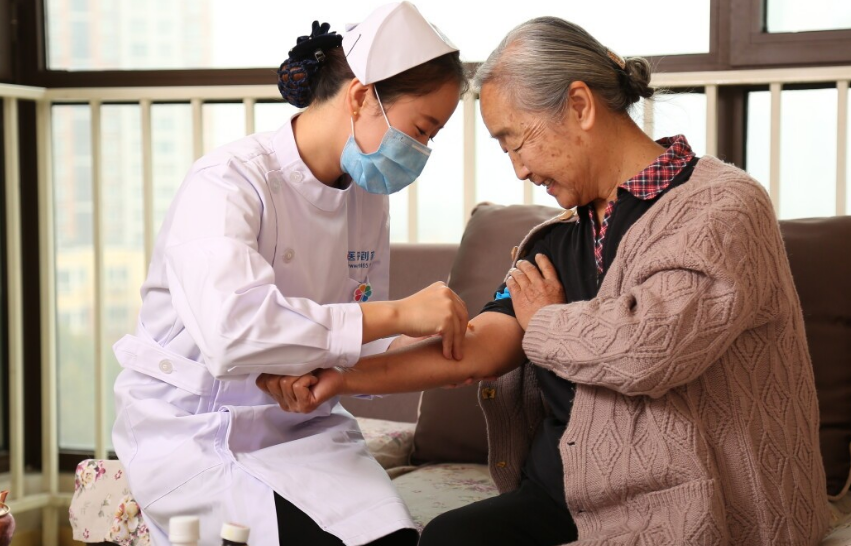Application advantages and development status of emerging nursing robots

Care robots can also address the physical limitations that the elderly usually have, and robotic devices can play a role in assisting activities, such as helping to get up and helping to pass items. In view of the decline of the memory ability of the elderly, a reminder service can be set for the robot to improve the social life ability of the elderly. Of course, for some emergencies, robots can also act as emergency rescue tasks and so on. These functions of robots are particularly important for the physiological health monitoring and home care of the elderly [5].
2.2 Liberating the labor force
The advantage of nursing robots is also reflected in their impact on society. Due to the rising cost of labor, people are eager to get rid of the boring and repetitive tedious labor and do something more meaningful. The service and care of the elderly is a long-term process, which is to some extent a waste of resources for the caregivers. For some families, if there are elderly people in need of care at home (especially sick elderly people), it will cause more or less of a burden to other family members, and the appearance of care robots will greatly reduce their time to take care of the elderly. For the whole society, it can solve the social security problem of the aging society, promote social harmony, and provide a good environment for economic development.
The application of service robots in the care of the elderly can not only liberate a group of labor, but also promote the development of the robot industry and promote the industrialization and marketization of robots. The application of robots in the tertiary industry can make certain contributions to the adjustment of industrial structure and promote the stable development of national economy [6].
3. Development status of nursing robots
3.1 Development status of nursing robots in foreign countries
The application of robots in medical and home health care is regarded as the most explosive new market for the robotics industry. The output value of nursing robots accounts for about 10% of the overall robot industry, second only to military, agricultural and construction robots, and the overall output value ranks fourth. There are more than 10,000 professional nursing robots in use worldwide.
According to market research, there are five main types of nursing robots: rehabilitation assistance, medical support, spiritual comfort partners, home health care and medical surgery robots. For these five categories of care robot products, a comparative analysis of the existing products in their markets is also carried out, as shown in Table 3.1.2.
The development of nursing robots in foreign countries is many years earlier than that in China, and the prototype of this robot has appeared as early as the 1940s, but the robots studied at that time are still far from providing nursing services. The real appearance of robots with nursing service functions was 40 years later in the 1980s. Since the 1990s, many countries have carried out research with their own characteristics, and a variety of nursing service systems have emerged, such as intelligent wheelchairs that can compensate for walking ability, intelligent nursing beds for disabled people, and robotic systems to help patients recover.
(1) Nursing robots in Europe: In the mid-1970s, the Spartacus operator project in France to help high paraplegic patients and the Heidelberg project in Germany opened a new chapter in service robots. In the late 1970s, the United Kingdom adopted a series of measures to support the development of robots and encourage the research and application of robots, ushering in a prosperous period of service robot research and development. In 1982, the Netherlands developed the experimental manipulator RSI, which can feed food and turn books on a saucer, laying the foundation for the production and use of the wheelchair manipulator Manus in 1984.
(2) Nursing robots in the United States: the United States is the first country to research and produce nursing robots, is the birthplace of a variety of robots, and has a large number of world-class robot design and manufacturing companies.
After the United States entered the 1980s, the government and the business community really paid attention to robots, encouraged robot research and development, formulated development plans, increased investment, and launched a considerable number of service robot products on the market.

In 1984, HelpMate, a typical representative of nursing robots, was born. This is a fully autonomous mobile robot system, which is installed with a variety of sensors, has obstacle avoidance function and autonomous navigation function, and can operate a designated destination through a human-machine interface to complete tasks such as delivering medicine, food, and medical records. Helpmate opens doors and has access to the elevator. At present, 80 hospitals around the world are using it.
In 1985, the "nurse assistant" robot began to develop, and in 1990, it was put into production and sales, and is used in dozens of hospitals around the world. It can create convenience for patients: sending medical records, delivering meals, and can also become a small helper for nurses: transporting medicines, medical equipment, etc.
- EMERSON
- Honeywell
- CTI
- Rolls-Royce
- General Electric
- Woodward
- Yaskawa
- xYCOM
- Motorola
- Siemens
- Rockwell
- ABB
- B&R
- HIMA
- Construction site
- electricity
- Automobile market
- PLC
- DCS
- Motor drivers
- VSD
- Implications
- cement
- CO2
- CEM
- methane
- Artificial intelligence
- Titanic
- Solar energy
- Hydrogen fuel cell
- Hydrogen and fuel cells
- Hydrogen and oxygen fuel cells
- tyre
- Chemical fiber
- dynamo
- corpuscle
- Pulp and paper
- printing
- fossil
- FANUC
- Food and beverage
- Life science
- Sewage treatment
- Personal care
- electricity
- boats
- infrastructure
- Automobile industry
- metallurgy
- Nuclear power generation
- Geothermal power generation
- Water and wastewater
- Infrastructure construction
- Mine hazard
- steel
- papermaking
- Natural gas industry
- Infrastructure construction
- Power and energy
- Rubber and plastic
- Renewable energy
- pharmacy
- mining
- Plastic industry
- Schneider
- Kongsberg
- NI
- Wind energy
- International petroleum
- International new energy network
- gas
- WATLOW
- ProSoft
- SEW
- wind
- ADVANCED
- Reliance
- YOKOGAWA
- TRICONEX
- FOXBORO
- METSO
- MAN
- Advantest
- ADVANCED
- ALSTOM
- Control Wave
- AB
- AMAT
- STUDER
- KONGSBERG
- MOTOROLA
- DANAHER MOTION
- Bently
- Galil
- EATON
- MOLEX
- Triconex
- DEIF
- B&W
- ZYGO
- Aerotech
- DANFOSS
- KOLLMORGEN
- Beijer
- Endress+Hauser
- MOOG
- KB
- Moxa
- Rexroth
- YAMAHA
- Johnson
- Westinghouse
- WAGO
- TOSHIBA
- TEKTRONIX


Email:wang@kongjiangauto.com



































































































































